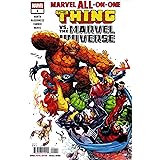It has been observed that a significant percentage of the world’s irreplaceable historical documents are facing ongoing degradation, with estimates suggesting millions of unique artifacts are at risk from environmental factors, physical handling, and the passage of time. This stark reality underscores the critical importance of modern preservation techniques. As discussed in the insightful conversation featured in the accompanying video, the monumental task of preserving our shared past is increasingly being entrusted to advanced digital methods. The focus is placed on digitizing fragile historical documents, a process that demands both precision and innovation to ensure the integrity of these invaluable cultural assets.
The field of digital archival preservation is evolving rapidly, driven by the imperative to safeguard records that are often too delicate for traditional handling. The primary objective is not merely to copy these items but to create faithful, durable digital surrogates that can be accessed and studied by future generations without further endangering the originals. However, this endeavor is fraught with challenges, as highlighted by Dr. Evelyn Reed and the interviewer, requiring a meticulous approach and the deployment of specialized technologies.
The Critical Need for Digital Archival Preservation
The sheer volume of historical material held in archives, libraries, and museums globally presents an immense challenge. Thousands upon thousands of documents, photographs, maps, and artifacts, many dating back centuries, are deteriorating at an accelerating rate. Imagine if the Magna Carta or the Declaration of Independence were to crumble away due to mishandling or environmental decay – such losses would be immeasurable. Consequently, the push towards digital archival preservation techniques is not just about convenience; it is a race against time to prevent the irreversible loss of human history and knowledge.
Understanding the Vulnerability of Historical Records
Historical documents are inherently fragile. They are composed of materials like aged paper, vellum, papyrus, and delicate inks, all of which are susceptible to damage from light, humidity, temperature fluctuations, and even minute vibrations. Furthermore, each interaction, whether for research or exhibition, introduces a risk of further degradation. A single touch can transfer oils, an accidental tear can destroy pages, and prolonged exposure to air can accelerate decay. Therefore, minimizing physical contact with original artifacts is a cornerstone of modern conservation efforts. This careful balance between access and preservation is central to effective preserving historical documents.
Overcoming Hurdles in Digitizing Fragile Historical Documents
The process of digitizing fragile historical documents is far more complex than simply scanning a modern paper. It involves overcoming a series of formidable hurdles that require specialized knowledge, equipment, and protocols. The challenges extend beyond the sheer scale of materials, focusing intensely on protecting the original artifact during every step of the conversion process.
Protecting the Integrity of Original Artifacts
As Dr. Reed aptly points out, maintaining the integrity of the original artifact is paramount during digitization. This means that methods which might be acceptable for robust modern papers are entirely unsuitable for a centuries-old manuscript. The goal is to capture the most accurate digital representation possible without causing any stress, damage, or alteration to the physical item. This often dictates the types of equipment that can be utilized, prioritizing non-invasive and contact-free scanning methodologies.
Pioneering Technologies for Digital Curation
Fortunately, the advancements in technology are providing powerful solutions to these complex challenges. The field of digital curation is continually adopting cutting-edge tools that enable safer and more effective digitization. These technologies not only aid in capturing images but also enhance the quality of the resulting digital assets, often surpassing what is visible to the naked eye.
Non-Invasive Scanning Techniques
The development of specialized, non-invasive scanners has revolutionized the way delicate items are handled during digitization. Unlike traditional flatbed scanners that require documents to be pressed flat, potentially damaging brittle pages or bindings, these advanced systems operate without direct physical contact. For instance, overhead book scanners use sophisticated camera systems to capture images from above, allowing books to remain open at a safe angle. Additionally, spectral imaging techniques can penetrate layers of obfuscation, revealing faded text or hidden annotations without touching the document itself. This is critical for non-invasive scanning for archives, ensuring that preservation is prioritized.
AI-Powered Image Enhancement and Restoration
Beyond initial capture, artificial intelligence (AI) is transforming the capabilities of digital preservation. AI-powered image enhancement algorithms can analyze degraded texts and images, intelligently filling in missing fragments, de-noising visual artifacts, and correcting color discrepancies. Imagine if a heavily faded photograph could be digitally restored to show details previously lost to time, or if a manuscript with bleed-through ink could be clarified for legibility. This technology not only aids in readability but also contributes to the authenticity of the digital record, offering researchers a clearer window into the past. Optical Character Recognition (OCR) combined with AI further streamlines the process, converting scanned images of text into searchable digital text, unlocking the content for broad academic use.
The Power of 3D Modeling in Historical Context
The application of 3D modeling to historical artifacts represents another significant leap forward. For objects that are not flat documents but three-dimensional items like ancient seals, fragile pottery, or sculpted fragments, 3D scanning allows for their complete digital reconstruction. This technology provides invaluable insights into the physical context of damaged texts or objects. Researchers can virtually manipulate, rotate, and examine these digital models from any angle, revealing inscriptions or structural details that might be impossible to study on the physical item due to its fragility or inaccessible location. This also allows for virtual reconstruction of fragmented artifacts, offering a more holistic understanding of their original form and function.
Beyond Preservation: Enhancing Accessibility and Research
The ultimate goal of digital archival preservation extends beyond simply safeguarding materials; it is also about democratizing access to history. When documents are digitized, they can be made available to a global audience, transcending geographical barriers. A researcher in one corner of the world can examine a document held in an archive thousands of miles away, fostering collaboration and accelerating discovery. This significantly broadens the impact of historical research and understanding.
The Ethical Dimensions of Digital Archival Preservation
However, with increased accessibility come ethical considerations. Issues such as copyright, intellectual property, and ensuring equitable access for all researchers must be carefully managed. Decisions about what to digitize, how to describe it, and how to present it digitally are crucial, as they shape future interpretations of history. Archivists and digital curators are tasked with maintaining rigorous standards for metadata, ensuring that the context and provenance of each digital record are accurately preserved alongside the content itself. This ensures that the digital surrogate is as trustworthy and informative as the original, forming a robust foundation for future academic inquiry and public engagement.
The Evolving Future of Digital Archives
The landscape of digital archival preservation is continuously evolving. As new technologies emerge, from advanced haptic feedback systems for virtual tactile exploration to blockchain for provenance tracking, the methods for safeguarding and presenting historical documents will continue to expand. The commitment to digitizing fragile historical documents remains at the forefront of this evolution, ensuring that the legacy of humanity is preserved for millennia to come.







